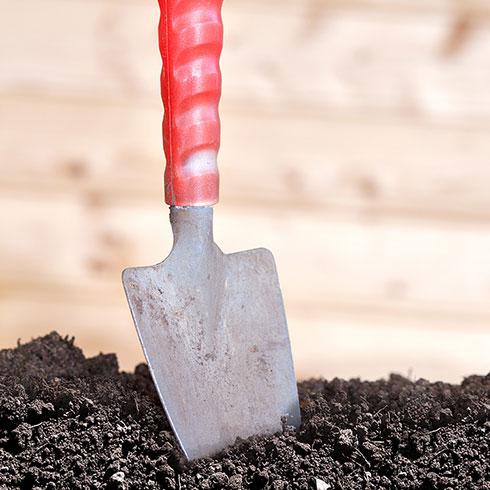Grow a Soil Ecosystem: GardenZeus™: Getting Started With a New Garden

Just like people, helpful soil bacteria and fungi need air to breathe, space to live, food, and water. In new gardens, especially in clay California soils, decompacting or loosening soil prior to planting will provide necessary oxygen and pore space for microbe habitat. Food can be supplied in the form of composted manures or other organic amendments worked into new garden soil, or as mulch at the soil surface.
Eventually, a thriving soil will produce its own food web: living plants secrete exudates, liquids or saps, from their roots, that feed helpful bacteria and fungi. As plants and microbes grow and die, they produce organic matter that feeds soil decomposers, which in turn are food for predatory microbes, such as protozoa and nematodes. Predatory microbes go where the food is; they’ll arrive in your soil as the populations of their food organisms develop, and will help keep harmful microbes in check.
Growing soil involves more than encouraging populations of bacteria and fungi; it’s about growing a soil ecosystem, an interrelated set of living systems in your soil. A thriving soil ecosystem provides the ideal conditions and capacities to support healthy plants, from nutrients in forms easily absorbed by plants to increased pest and disease resistance.
There are partial exceptions to this rule, such as for many of the California native plant species grown commonly in gardens and landscapes, which have different soil-ecosystem needs, and may not thrive or even survive in fertile soil conditions when surrounded by the rich diversity of soil life that is needed to produce abundant vegetables.